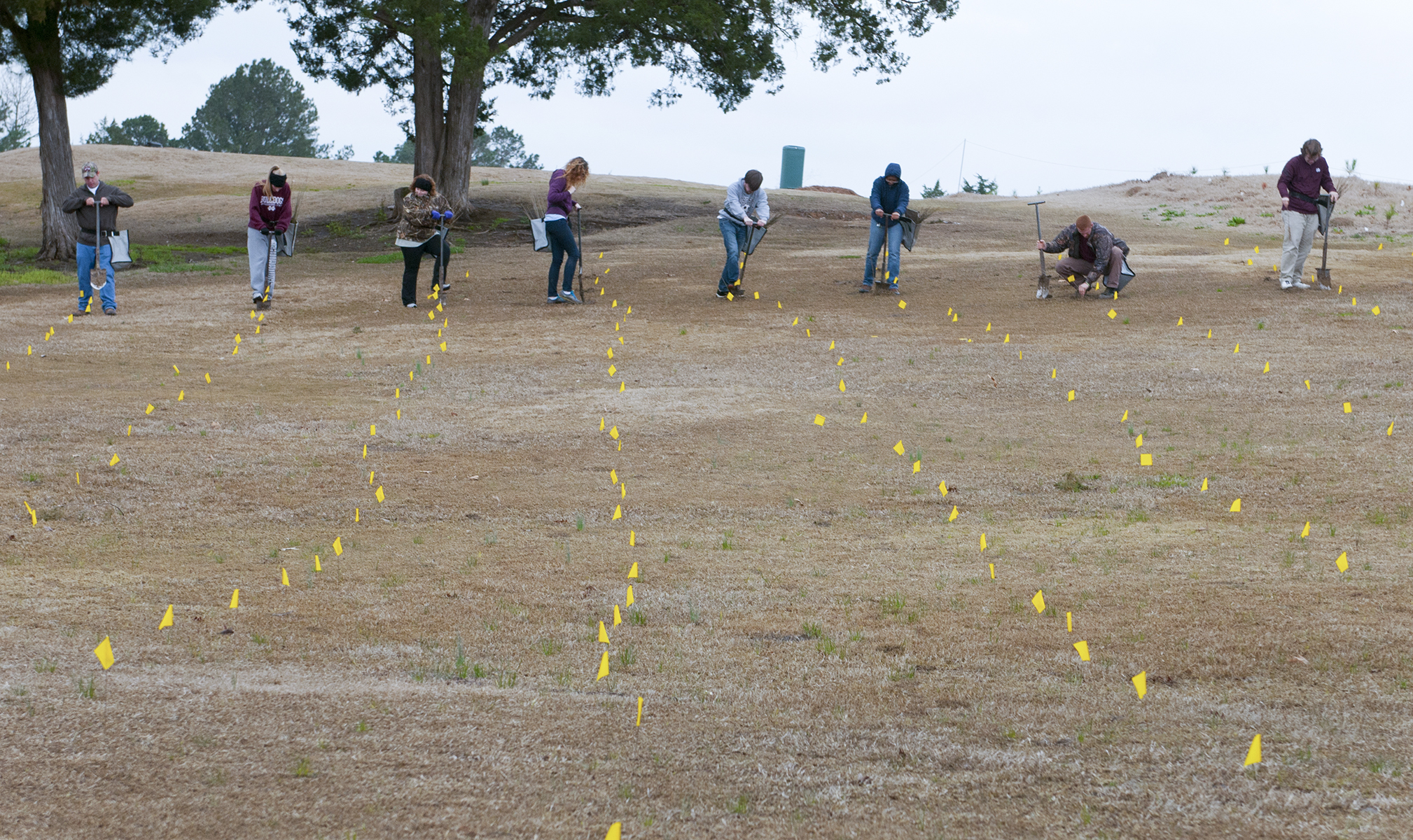Contact: Meg Henderson

STARKVILLE, Miss.--Even though Nobel Prize winning Kenyan activist Wangari Maathai died in 2011, an international legacy of social and environmental justice she started is alive and well today.
At Mississippi State, her memoir, "Unbowed (Anchor, 2007), is this year's selection for the Maroon Edition common freshman reading experience. In addition to readings, university administrators and faculty have organized a variety of lectures, service projects and cultural events, both on and off campus.
A recent Maroon Edition project involved the planting of 7,200 seedlings over the grounds of the MSU Golf Course. The project was made possible through the collaborative efforts of Maroon Edition leaders and their campus counterparts in the College of Forest Resources and Maroon Volunteer Center, along with numerous student and community volunteers.
Professor emeritus Lynn Reinschmiedt, Maroon Edition consultant who has been involved since the reading program began five years ago, said the tree planting concept was formed last year in a freshman political science course. While introducing the book to his class, instructor Whit Waide made the offhand comment that members of the class were "going to have the chance to plant a tree," Reinshcmiedt recalled recently.
Waide's remark helped plant the idea for the project with Jerry Gilbert, university provost and executive vice president for academic affairs. Gilbert passed the idea along to forestry department head Andrew Ezell.
Since much of Maathai's work centered around tree plantings, Ezell agreed that the project could be a "perfect fit" for the theme of this year's Maroon Edition--and the golf course as the best place to carry out a project on a large scale.
Since forestry students had planted other trees at the location last year, golf course personnel knew where they wanted the new trees to be placed.
Industrial nurseries, including Weyerhaeuser, Plum Creek Timber and Rayonier, were contacted by Ezell and agreed to donate pine and hardwood seedlings. The forestry department provided the planting equipment.
Even with all the multi-level support given the project, its successful conclusion would not have been possible without the specialized efforts provided by MSU forestry majors, Ezell said.
"Our graduate students are the ones who separated the seedlings into bundles and got the equipment out there," he said.
He also credited members of the Society of American Foresters student chapter for serving as crew leaders. "They demonstrated how to plant trees and helped the students plant them," he added.
Reinschmeidt expressed praise for the Maroon Volunteer Center and its program coordinator Meggan Franks for recruiting and scheduling work times for more than 240 student participants over a three-week period.
"The feedback from students is extremely positive," Franks observed. "They know that they can come back to the university 20 years from now and tell their families 'I planted those trees.'"
Reinschmiedt, who has developed a photographic archive of the planting sessions, agreed that all students involved have benefitted by giving something back to the 135-year-old land-grant institution.
"By bringing volunteers together who sometimes don't know each other, the students expand their network of friends," Reinschmiedt said.
Added Ezell: "We emphasize to the volunteers that they're doing something that will last a very long time. We hope they understand that they are creating a legacy at MSU."